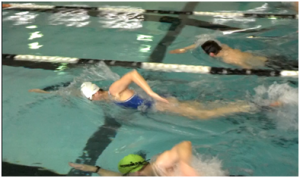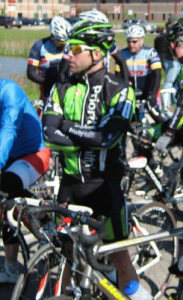If you are hoping to make big gains this winter and to take your performance to it’s next level, there are some key items you need to address ASAP in order to set yourself up for a successful winter training season. A little bit of thought and planning will go a long way by making your training time more focused, efficient and fruitful.
#1 Define your Annual Training Hours
You need to know what your time commitment is. Don’t just be realistic, be on the conservative side. Talk this over with your support team (ie. your better half)! Base it on your biggest week, ex. I can swing a 14 hour week once or twice this season. Write down vacations and other life commitments that will be a factor.
#2 Define your Racing Focus for the 2013 Race Season
What type of racing are you going to focus on? What is the date of that first race? This is important because it will set up your training focus. If you plan to be a crit racer, you will train differently in the winter then if you are planning to race stage races or long road races. Same if you are a Tri-Geek: if your first Ironman is on the horizon that’s a different winter then if you want to rip sprint distance races this coming summer.
#3 Figure out your Weaknesses and Limiters
This is very tough to do without a coach. Being purely objective about your personal strengths and weakness is not something that comes naturally to us humans. The tendency is to always find a way to convince ourselves that we should spend nearly ALL of our time working on the stuff we are best at. The winter is the time to focus on your weaknesses. This is VITAL to getting to a new level of performance and results.
All weaknesses are not limiters! This is important because most of us have limited time, and thereby need to optimize every second. Limiters are weaknesses that impact your ability to get results WITHIN your race focus. Example, if you are a weak climber but your key race(s) are primarily flat, then your weakness as a climber is NOT a limiter. As stated above, you need to understand your race focus to establish your limiters. Then focus your time in the winter on improving those limiters. If you don’t, you will at best get the same results this coming season as you did last season, and the season before that, and on and on and on‚Ķ
You will need to complete some testing to help figure out your weaknesses and to setup your training zones (see #4). Field tests are great and needed, but if you can fit it into your budget, metabolic testing will provide you data that will prove to be priceless in optimizing your time and priorities in training. Our testing partner, Steph Walbridge with In The Zone , does a fantastic job and has a tremendous amount of experience with endurance athletes. I will write a separate Blog to explain why this is so important later.
#4 Figure out your proper training zones
You have to know your proper training zones. PERIOD! Not having and training with them is like being out in the mountainous wilderness in the middle of nowhere with a really great map but NO COMPASS.
Some key things if you are a triathlete, you need zones for run, bike and swim. They are NOT the same. You can’t just do a field test on the bike and use those numbers for the run and swim‚Ķ They can be extremely different for some people.
#5 Write down your Race Schedule for 2013
We’ll talk more later about how to build an annual training plan. You will need everything above defined in order to do that. You will also need to know your race schedule or at least when your biggest “A” race is going to be and your first race of the year. A good sketch of the whole season is nice to have.
GET GOING ON THIS STUFF!!!!!!!!!!!





 Our Hockey Site
Our Hockey Site Team AM
Team AM



